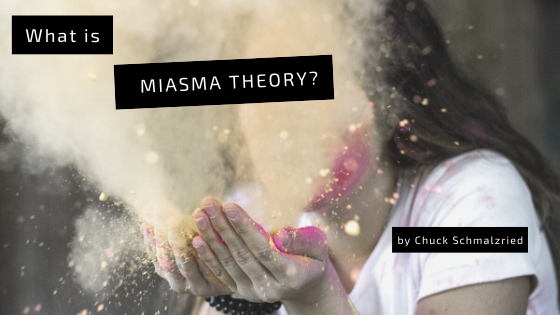Many obsolete medical theories were prevalent for decades before they were eventually proven to be incorrect. One of these is known as the Miasma Theory. This theory was given its name after Hippocrates, the first person to use the word “miasm,” which is related to the Greek word used to describe something that has been tainted. The Miasma Theory was the belief that diseases could be spread by rotting or decaying organic matter. This microscopic matter would then hang in the air, making it foul and was believed to be capable of causing diseases like the Black Death, chlamydia, and cholera.
A Brief History
Up until the late 19th century, the miasma theory was considered sound and was followed by practically every medical professional. Industrialization took place very quickly, and it produced what became unmanageable pollution at the time. Filthy, disease-ridden neighborhoods began springing up, and horrid smells hung in the air in these areas. When diseases like cholera began spreading, it was attributed to the miasma in the air.
What are Miasms?
In homeopathy, miasms are regarded as microorganisms that have a destructive effect on the human life force. It’s these kinds of microorganisms that are believed to cause a degeneration of the immune system that causes a host of autoimmune disorders and illnesses. This is similar to the miasma theory but is grounded in fact. Pollution in the air, like smog, has been linked to diseases of the lung, such as emphysema.
Before more credible homeopathic beliefs and treatments, a miasm was more of a predisposition for having certain illnesses. This was apparently because the microorganisms inhaled from the air could be passed onto future generations. This included the symptoms of these illnesses themselves. Samuel Hahnemann was a physician who believed that miasms existed in three varieties. In 1828, he introduced them as:
- Psora, the itch miasm
- Syphilis, the genital ulcer miasm
- Sycosis, the gonorrheal miasm
The theory that it was germs that caused diseases, and not foul air, was finally introduced in the mid-1800s, and the miasma theory was replaced. However, it should be remembered that cleaning up environments enough to remove a strong offensive odor is equal to having killed countless numbers of infectious bacteria. In some ways, adhering to the Miasma Theory can provide benefits when action is taken to improve the surrounding environment, but it is also advised that we acknowledge the direct cause of illness and disease when taking steps to reduce the risk of contracting such conditions.
